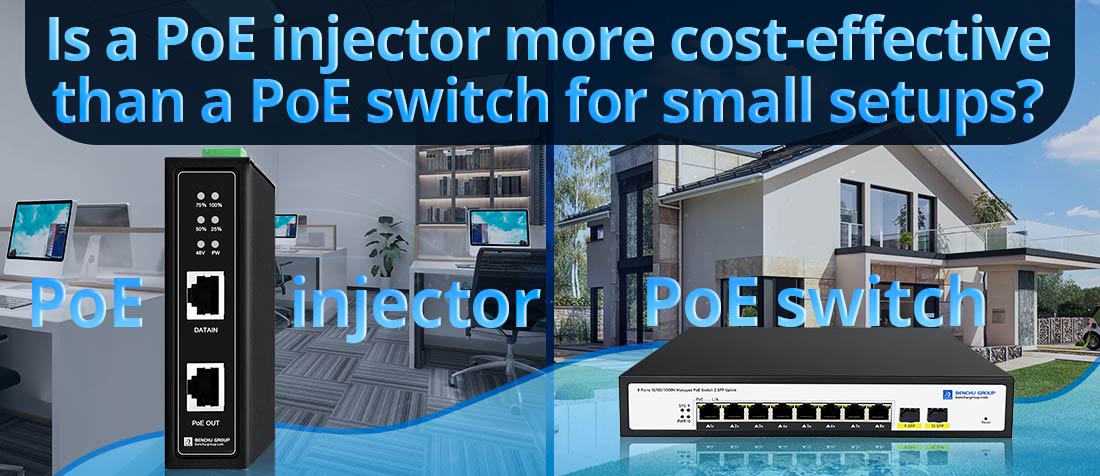
The choice between a PoE injector and a PoE switch depends on factors such as the number of devices, budget, power requirements, and future scalability. Below is a detailed cost-effectiveness comparison for small network setups.
1. Understanding the Difference
--- A small device that adds power to a non-PoE network connection for a single device.
--- Best for situations where only one or two devices need PoE power.
--- Typically more affordable upfront.
PoE Switch:
--- A network switch with built-in PoE capability, powering multiple PoE-enabled devices.
--- Ideal for larger or growing setups.
Offers better power management and scalability but costs more.
2. Cost Comparison
| Item | PoE Injector (Single-Port) | PoE Switch (4 to 8 Ports) |
| Upfront Cost | $15 - $50 per injector | $60 - $250 depending on ports and power budget |
| Number of Devices Supported | 1 per injector | 4 to 8 PoE devices |
| Total Cost for 2 Devices | $30 - $100 (2 injectors) | $80 - $150 (4-port switch) |
| Total Cost for 4 Devices | $60 - $200 (4 injectors) | $100 - $250 (4-8 port switch) |
| Power Efficiency | Individual power adapters needed | Centralized power management |
| Scalability | Limited | Easier to expand |
| Cable Management | More clutter with multiple injectors | Cleaner setup |
Cost Comparison Insight:
--- For 1-2 devices, PoE injectors are cheaper and make sense for small setups.
--- For 3 or more devices, a PoE switch is more cost-effective in the long run.
3. When a PoE Injector is More Cost-Effective
--- You only need to power one or two devices (e.g., a single access point or IP camera).
--- You already own a non-PoE switch and don’t want to replace it.
--- Your network won’t grow beyond a couple of PoE-powered devices.
--- Lower upfront cost is a priority.
Example Use Case: A small office needs PoE power for a single Wi-Fi access point—buying a $30 PoE injector is more affordable than a $100 PoE switch.
4. When a PoE Switch is More Cost-Effective
--- You need to power 3 or more PoE devices.
--- You want better cable management (fewer power adapters).
--- You need future scalability—PoE switches allow adding more devices.
--- You want centralized power management for efficiency and monitoring.
Example Use Case: A home security system with four PoE cameras—a $120 PoE switch is a better investment than four $40 injectors ($160 total).
5. Long-Term Considerations
Energy Efficiency: PoE switches use a single power source vs. multiple power adapters for injectors.
Space & Cable Management: A PoE switch reduces clutter with fewer power adapters.
Future Expansion: If your network may grow, a PoE switch prevents needing multiple injectors later.
Conclusion: Which is More Cost-Effective?
--- PoE Injectors: Best for one or two PoE devices and lowest upfront cost.
--- PoE Switches: More cost-effective for three or more devices with better scalability and efficiency.
For small setups, a PoE injector is initially cheaper, but a PoE switch provides better long-term value if you plan to expand your network.